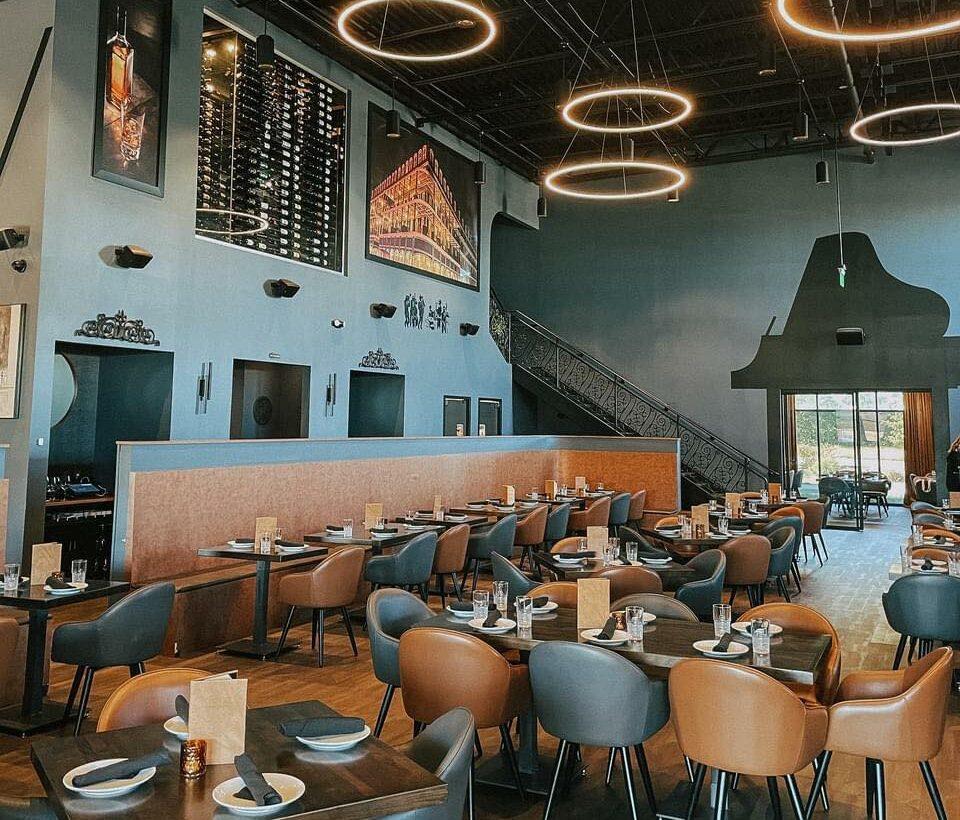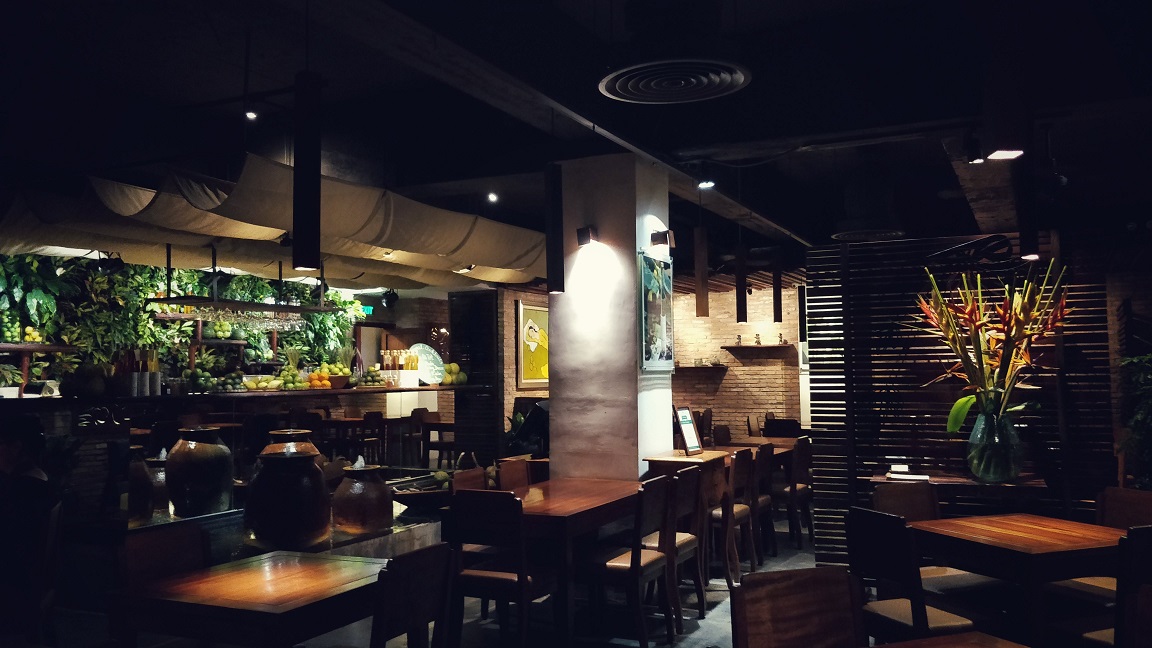Romantic Restaurants Islamabad: Perfect Dining Destinations for Couples
Romantic Restaurants Islamabad: Perfect Dining Destinations for Couples
Blog Article
Savor Authentic Oriental Food With a Pan-Asian Spin for a Culinary Adventure
Starting a culinary journey with authentic Eastern cuisine, boosted with a Pan-Asian twist, supplies a special opportunity to discover the abundant tapestry of tastes that specify the area's varied culinary practices. This experience welcomes you to savor the elegant balance of preferences-- sweet, salty, spicy, and sour-- harmonized by fragrant herbs and spices. Imagine the ingenious blend of Thai curry and ramen or the unexpected joy of sushi burritos. As you contemplate these attracting meals, consider the social narratives and historic impacts that shape them, each bite offering a tale waiting to be found.

Checking Out Pan-Asian Tastes
In the world of global gastronomy, Pan-Asian food attracts attention for its amazing diversity and the unified interplay of flavors from different Asian societies. This culinary technique celebrates the abundant practices and distinct active ingredients located throughout the continent, developing a tapestry of tastes that is both intriguing and gratifying. Secret to Pan-Asian cuisine is its capacity to balance different flavors-- pleasant, salty, spicy, and sour-- while highlighting the quality and high quality of each ingredient.
From the umami-rich soy sauce of Japan to the fiery chili peppers of Thailand, Pan-Asian cuisine uses an extensive combination of tastes. These elements are frequently combined in innovative means, boosting meals with layers of intricacy. For example, making use of aromatic herbs such as lemongrass and cilantro, typical in Vietnamese and Thai food, includes a revitalizing illumination to recipes, while the consolidation of coconut milk provides a creamy, rich structure.
The emphasis on fresh produce and fragrant seasonings makes sure that each meal is not only a feast for the taste but also for the detects. Pan-Asian cuisine welcomes restaurants to start a culinary journey, checking out the huge and differed landscapes of Asian gastronomy with every bite.
Blend Meals to Try
While Pan-Asian cuisine is commemorated for its traditional flavors, the contemporary cooking landscape is significantly accepting combination meals that blend these timeless elements with impacts from other areas. This ingenious strategy not just honors the rich heritage of Eastern culinary arts yet additionally introduces unique taste experiences that appeal to modern tastes.
A prime instance of such a combination recipe is the Korean-Mexican taco, where seasoned bulgogi beef is covered in a cozy tortilla, topped with kimchi and a hot gochujang-infused salsa. This mix weds the strong, full-flavored tastes of Korea with the vibrant, fresh components of Mexican cuisine. Similarly, sushi burritos have actually acquired popularity, joining together the fragile artistry of Japanese sushi with the passionate, hand-held benefit of a burrito, usually including fusion components like tempura shrimp and avocado with a drizzle of wasabi mayo.
An additional notable dish is Thai curry ramen, which instills the creamy, fragrant seasonings of Thai curry right into the reassuring brew of standard Japanese ramen, developing an unified blend that entices the senses. These blend dishes prolong beyond mere uniqueness; they stand for a culinary discussion between societies, encouraging exploration and technology worldwide of Pan-Asian food.
Necessary Components and Flavors
To truly appreciate Pan-Asian food, one must recognize the crucial ingredients and seasonings that create its structure. This varied culinary style draws from an abundant tapestry of Asian practices, utilizing an unified mix of appearances and flavors.
Aromatic elements are critical, with ginger, lemongrass, and garlic being common throughout various Pan-Asian dishes. These components provide an aromatic base that boosts the complexity of tastes. Seasonings such as star anise, cardamom, and cinnamon present warmth and character, resembling influences from areas like China and India.

Cooking Methods and Tips
Understanding the art of Pan-Asian cuisine requires experience with its unique cooking techniques, each adding to the lively tapestry of tastes this cooking custom is commemorated for. Central to these techniques is see this the stir-fry, a rapid food preparation technique that protects the nutritional integrity and vivid shades of ingredients. Utilizing a frying pan, the stir-fry method permits even heat circulation, necessary for attaining the particular appearance and flavor balance of Pan-Asian dishes.
Another basic strategy is steaming, particularly common in Chinese cuisine. This gentle approach keeps the natural tastes and nutrients of ingredients, making it excellent for seafood and vegetables. Dumplings, a precious staple, typically take advantage of steaming, causing soft, succulent appearances.
Grilling, also indispensable, presents smoky depths to meals such as Oriental bulgogi or Japanese yakitori (pan asian restaurant Islamabad). This strategy usually includes seasoning active ingredients, enabling tastes to permeate deeply before food preparation over an open fire or hot plate
Lastly, mastering the art of stabilizing tastes-- pleasant, sour, salted, bitter, and umami-- is crucial. Appropriately layering these elements can elevate a recipe from average to extraordinary, offering a complicated and satisfying cooking experience that symbolizes the essence of Pan-Asian food.
Dining Experiences Worldwide
Around the world, Pan-Asian cuisine uses an unmatched dining experience, celebrated for its rich tapestry of tastes and lively discussions. This culinary phenomenon has transcended social boundaries, catching the hearts and palates of food enthusiasts worldwide. In cosmopolitan cities fresh York, London, and Sydney, Pan-Asian dining establishments serve as fusions where culinary customs from Thailand, Japan, China, and beyond converge, giving hop over to here restaurants with a diverse mix of recipes that highlight the area's variety.
The worldwide charm of Pan-Asian food hinges on its ability to provide both credibility and technology. Chefs masterfully wed traditional active ingredients such as lemongrass, soy sauce, and miso with modern strategies, causing meals that are both refreshingly brand-new and familiar. This blend allows restaurants to get started on a culinary trip that appreciates heritage while welcoming modernity.
In addition, eating experiences are boosted through attentively developed settings that reflect the values of Pan-Asian looks. From minimal Japanese-inspired interiors to vivid Thai-themed areas, each dining establishment offers an unique atmosphere that enhances the culinary offerings. this website Consequently, patrons are not simply taking in a meal but partaking in a cultural experience, making Pan-Asian eating a genuinely global sensation.
Verdict
The exploration of Pan-Asian cuisine offers an extensive understanding of the elaborate interplay of flavors and cooking traditions across Asia. By accepting fusion meals such as Thai curry ramen and sushi burritos, the culinary journey not just highlights the adaptability of conventional components but also showcases innovative modern-day techniques. This gastronomic adventure, enhanced by cooking methods and important flavors, offers a special chance to appreciate the social diversity and cooking creativity that define Pan-Asian cuisine on an international scale.
Getting started on a cooking trip via authentic Oriental cuisine, improved with a Pan-Asian twist, supplies a special chance to explore the rich tapestry of tastes that specify the region's diverse culinary customs.In the realm of international gastronomy, Pan-Asian cuisine stands out for its remarkable diversity and the unified interplay of flavors from various Oriental societies. Trick to Pan-Asian cuisine is its capacity to balance different tastes-- sweet, salty, spicy, and sour-- while highlighting the freshness and quality of each ingredient.

Report this page